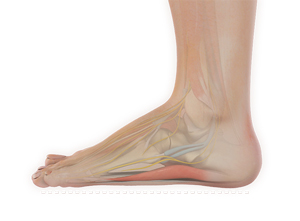
What is Flatfoot Reconstruction?
Foot reconstruction is a surgery performed to correct the structures of the foot and restore the natural functionality of the foot that has been lost due to injury or illness.
Flatfoot or pes planus is a condition in which the foot does not have a normal arch when standing.
What are the Indications for Flatfoot Reconstruction?
The primary objectives of flatfoot reconstruction is to improve pain and restore function. This can greatly benefit patients. The surgery performed depends on several factors such as your age, severity of condition, and duration of the symptoms.
It is often recommended when conservative treatment fails to resolve the symptoms.
However, if imaging shows significant arthritis in the hindfoot and midfoot, sometimes reconstruction isn’t the best option and a fusion is recommended.
How is a Flatfoot Reconstruction Performed?
This procedure is performed under general anesthesia. The heel bone is cut and moved over to help provide a new arch. The worn or torn posterior tibial tendon (PTT) is then identified and removed if it is too diseased. The new tendon that will hold up the arch, the flexor digitorum longus (FDL), is then brought over to and attached to where the PTT used to be. Occasionally, on very bad deformities, another bone cut on the outside of the foot is needed to get the arch restored.
At the end of the procedure, the surgical incisions are closed and a splint with your foot pointing inward is applied.
What is the Post-Operative Care for Flatfoot Reconstruction?
Following are the post-surgical guidelines to be followed after reconstruction:
- Make sure to not place any weight on the affected foot. Strict non-weightbearing is vital for the new tendon to heal.
- Take medications to help alleviate pain and inflammation as prescribed by your doctor.
- Apply ice bags over a towel to the affected area for about 15-20 minutes to reduce postoperative pain and swelling.
- Keep your splint clean, dry and intact.
- Keep the foot elevated at or above the level of your heart to help minimize swelling and discomfort.
- Use crutches, walker or wheelchair to maintain no weight on the operated on leg.
- Start rehabilitation (physical therapy) as recommended by your surgeon to improve range of motion.
- Cover the splint while showering to keep it clean and dry.
- Return to sports once the foot has regained its normal strength and function with your surgeon's approval.
The outcome of flatfoot reconstruction surgery is greatly improved when you, your surgeon, and the physical therapist work together as a team.








